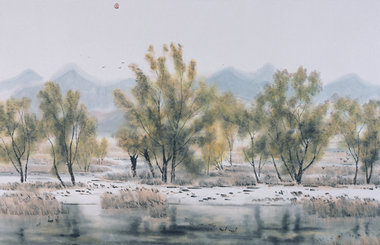Iron steeds of the steppe
By Alexis Hooi ( China Daily ) Updated: 2015-08-22 08:14:19
 |
|
The Mongolian horse is a perfect product of its habitat, the only breed tough enough to survive and thrive in the harsh grassland environment throughout the year. [Bao Yin/China Daily] |
Nomads across the Central Asian plains inherited their ancestors' appreciation of the Mongolian horse and their dependence on the range-bred beasts in many aspects, including transport, sustenance and companionship. The art and language of the grassland abound with allusions to horses, such as folk songs that depict heroic exploits on horseback. The horse is typically ranked first among all the herd animals.
In Inner Mongolia, rapid development and modernization have contributed to a decline in the use and number of Mongolian horses in the past few decades. In recent years their numbers have fallen below 700,000, less than one-third of that in the 1970s, according to national equestrian industry figures.
But in the autonomous region's Duolun county, many still echo fellow herdsman Mengke's pride in their native horses' prowess.
Yao Limin, 48, has been breeding Mongolian horses on Duolun's plains all his life. For him there is no animal more suited to the land of his forefathers.
"They can run on and on for days on end," says Yao, who has more than 50 horses in his stable.
"Rest? Just let them out to graze naturally at the end of the day. They'll be well rested and ready to go the next day."
Wu Gangfang, spokesman for the Chinese Equestrian Association and chief editor of its website, the largest of its kind in the country, says the Mongolian horse is a perfect product of its environment.
"The breed as we know it has evolved to thrive in the harsh grassland environment. People often think of grassland as lush, verdant plains. But that's for a short period during the summer months. The Mongolian horse is the only breed tough enough to survive on the grassland throughout the year."
|
|
|
|
|
|
|
|

























 Raymond Zhou:
Raymond Zhou: Pauline D Loh:
Pauline D Loh: Hot Pot
Hot Pot Eco China
Eco China China Dream
China Dream China Face
China Face






